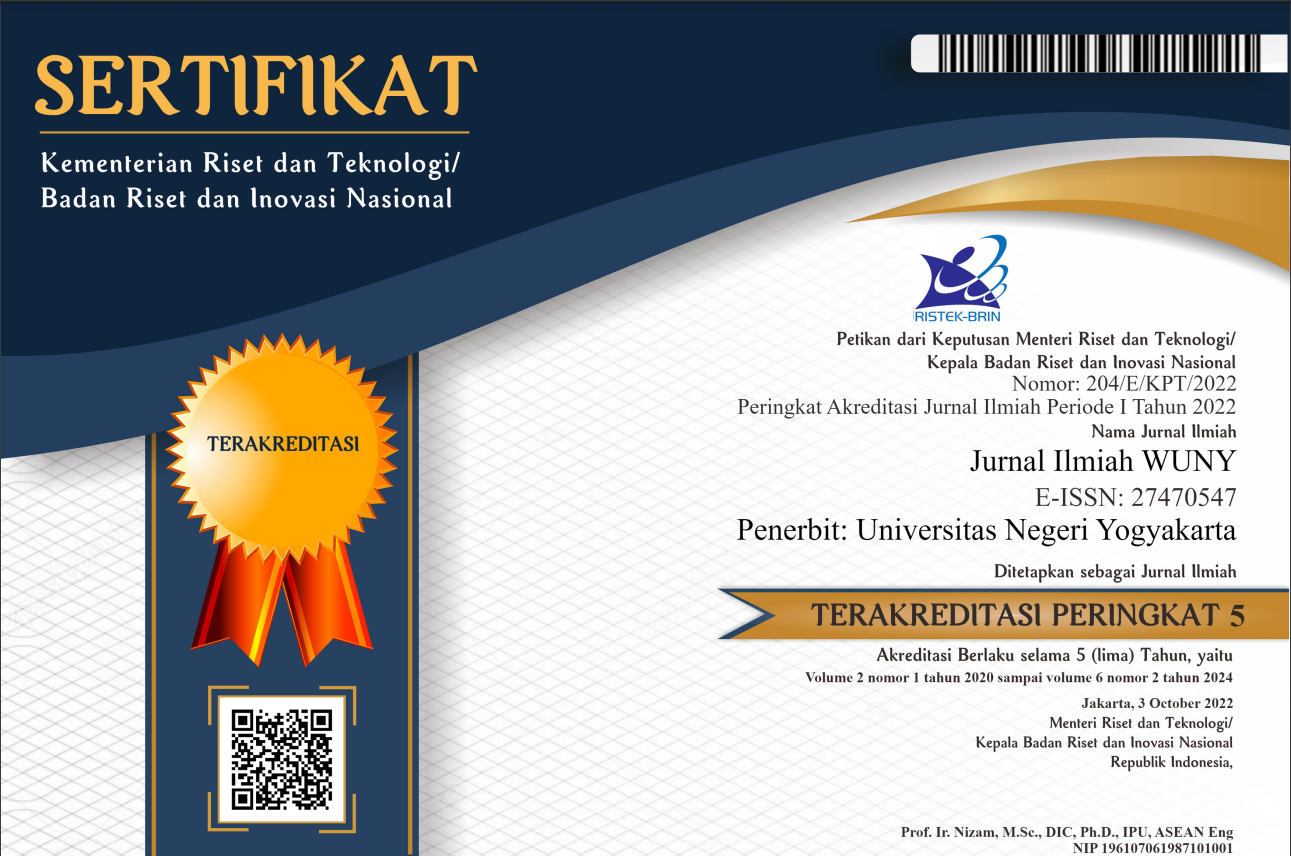The impact of Brain-Based Learning on critical and creative thinking in English Language Teaching
DOI:
https://doi.org/10.21831/jwuny.v6i2.78485Keywords:
Brain-Based Learning, Critical Thinking, Creative Thinking, English Language Teaching, 21st Century SkillAbstract
This paper investigates the impact of Brain-Based Learning (BBL) strategies on fostering critical and creative thinking skills in English language teaching. In the context of 21st-century education, where the demands for innovation, critical thinking, and problem-solving are paramount, BBL emerges as a pedagogical approach that aligns teaching methods with cognitive science principles. Through a qualitative exploration of teacher perspectives and a quantitative analysis of classroom outcomes, this study highlights how BBL encourages the development of both hemispheres of the brain, promoting not only logical reasoning but also imaginative problem-solving. The findings underscore the potential of BBL to transform traditional English language teaching (ELT) practices by fostering a more holistic, engaging, and dynamic learning environment. Practical recommendations for integrating BBL into English classrooms are also provided..References
Brookhart, S. M. (2010). How to Assess Higher-Order Thinking Skills in Your Classroom. ASCD. https://doi.org/10.1007/978-94-007-6875-4_9
Caine, R. N., & Caine, G. (1991). Making Connections: Teaching and the Human Brain. Addison-Wesley.
Ceylan, N., & Esra, S. (2022). Does awareness on the principles of brain-based learning have any effect on students' academic achievement?. International Journal of Education Technology and Science, 2(4), 415-428. https://doi.org/10.35842/ijets.315
Dettweiler, U., Gerchen, M., Mall, C., Simon, P., & Kirsch, P. (2023). Choice matters: Pupils' stress regulation, brain development, and brain function in an outdoor education project. British Journal of Educational Psychology, 93(1), 152-173. https://doi.org/10.1111/bjep.12528
Duman, B. (2010). The effects of brain-based learning on the academic achievement of students with different learning styles. Educational Sciences: Theory and Practice, 10(4), 2077-2103. https://doi.org/10.1007/978-1-4020-9457-2_12
Erlita, R., Untari, E., & Murdiyah, S. (2020). Pengaruh Model Brain-Based Learning (BBL) Berbasis Eksperimen terhadap Hasil Belajar Siswa Kelas V. Jurnal Pendidikan Dasar Nusantara, 6(1), 116-126. https://doi.org/10.29407/jpdn.v6i1.14495
Fraenkel, J. R., Wallen, N. E., & Hyun, H. H. (2012). How to Design and Evaluate Research in Education (10th ed.). McGraw-Hill.
Jensen, E. (2008). Brain-Based Learning: The New Paradigm of Teaching. Corwin Press.
Limb, C. J., & Braun, A. R. (2008). Neural substrates of spontaneous musical performance: An fMRI study of jazz improvisation. PLoS One, 3(2), e1679. https://doi.org/10.1371/journal.pone.0001679
Maley, A., & Peachey, N. (2015). Creativity in the English Language Classroom. British Council. https://doi.org/10.1787/9789264255486-en
Nunan, D. (2010). Teaching English to Speakers of Other Languages. Routledge. https://doi.org/10.4324/9781315833127
Richards, J. C. (2015). Key Issues in Language Teaching. Cambridge University Press. https://doi.org/10.1017/9781139023981
Sousa, D. A. (2011). How the Brain Learns. Corwin Press. https://doi.org/10.4135/9781544328917
Zadina, J. (2014). Multiple Pathways to the Student Brain: Energizing and Enhancing Instruction. Jossey-Bass.
Zohar, A., & Dori, Y. J. (2003). Higher order thinking skills and low-achieving students: Are they mutually exclusive?. The Journal of the Learning Sciences, 12(2), 145-181. https://doi.org/10.1207/S15327809JLS1202_1
Downloads
Published
How to Cite
Issue
Section
License
This work is licensed under a Creative Commons Attribution-ShareAlike 4.0 International License.









